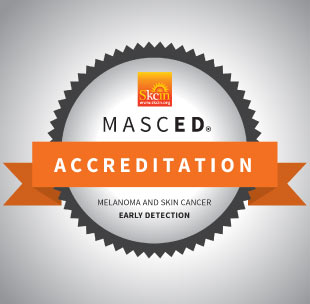Whilst we are still not quite able to open our clinics, it is good news that we can all now exercise for unlimited amounts of time outside (whilst still observing social distancing), but, at the same time, we are coming into the summer months and that means higher levels of ultra-violet radiation from the sun, which is the main cause of skin cancer (there’s always a cloud to every silver lining isn’t there)! The good news is that 86% of melanoma and the vast majority of non-melanoma skin cancers are preventable according to Skcin (The Karen Clifford Skin Cancer Charity) who run the Masced Pro Melanoma and Skin Cancer Early Detection training programme that I have just completed in order to aid my ability to detect suspicious lesions on my patient’s feet and legs and refer on appropriately.
You might not imagine that there is much of a link between Podiatry and skin cancer but, sadly, a number of cancerous skin lesions occur on the feet, so it is important for me to keep my knowledge up-to-date professionally, but it is also important that we all protect our skin and know what to look out for as we are all at risk of skin cancer (especially frequent outside exercisers and workers). The Skcin website is full of useful tips about sun safety and also what to look out for with respect to your own skin but I thought the following was particularly useful:
The Five S’s of Sun Safety (whenever the UV index forecast reaches 3 or above – how many of us can honestly say we check the UV index before going out to exercise?):
1) Slip on a t-shirt to keep shoulders covered as they are easily burned
2) Slop on a quality, broad-spectrum sunscreen (SPF 30 or above) to exposed skin
3) Slap on a wide-brimmed hat to shade the face, neck and ears
4) Slide on quality sunglasses to protect the eyes
5) Seek shade when possible, particularly during peak UV hours (11am-3pm)
Know your skin and when to seek help. Take action if:
a. A mole changes shape – particularly getting an irregular outline
b. A mole changes colour / getting darker, patchy or multi-shaded
c. A new or existing spot / mole is elevated, firm to touch and growing
d. A new spot or existing mole starts to itch, gets painful, starts bleeding, gets crusty or becomes inflammed
e. Any skin, nail or mucosal (lips and genetalia) lesion looks or is behaving differently to the rest of your moles or skin lesions
Sun safety for kids
It is also obviously very important not to forget children when considering skin cancer risks and not just when on holiday or on hotter days, but also when they are exercising. The Outdoor Kids Sun Safety Code was re-launched in April 2019 and their website has lots of helpful advice for parents and those involved in organising children’s sporting activity to help children stay safe in the sun and reduce their risk of skin cancer in later life.

